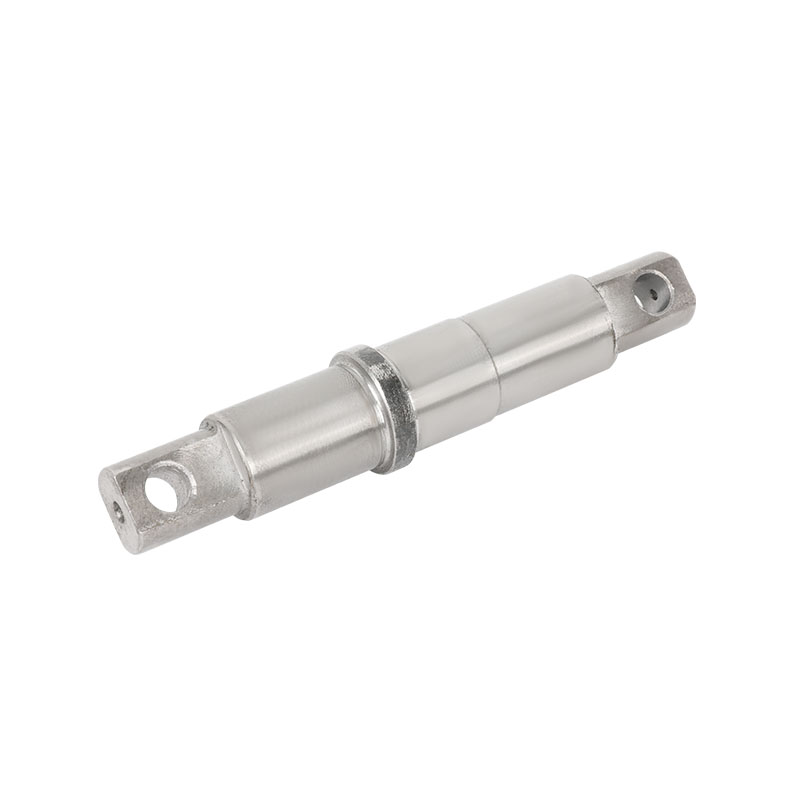Worm gear reducers are widely used in industrial equipment and mechanical systems due to their high reduction ratio and self-locking performance. However, its transmission efficiency is usually lower than other types of reducers, so optimizing the design of accessories to improve transmission efficiency is an important research direction in the industry.
Worm gears are usually made of bronze, while worm gears are made of high-strength alloy steel. In order to reduce friction loss and improve transmission efficiency, you can consider using a high-hardness coating (such as tungsten carbide coating) or super-hard ceramic material on the worm surface, while improving the worm gear material to improve its wear resistance and self-lubricating properties, such as developing additives Lubricant filled composite worm gear.
High-precision tooth profile processing can significantly reduce sliding friction during the meshing process and improve transmission efficiency. Using CNC gear grinding technology, the worm helix angle and worm gear tooth profile can be optimized to achieve more precise mesh matching.
The worm gear system generates a large amount of sliding friction during the transmission process, and appropriate lubricating oil can effectively reduce friction losses. Developing special low-viscosity, high-anti-wear lubricants can reduce the heat generated during the transmission process and improve transmission efficiency.
The accessories design can integrate an automatic lubrication system to deliver lubricating oil regularly according to temperature, load or operating time to avoid local wear and efficiency reduction caused by uneven lubrication.
Optimize the contact area between the worm gear tooth shape and the worm helix to increase the tooth surface contact area, disperse pressure and reduce friction loss per unit area. The use of modification technology, such as end tooth modification and helical tooth modification, can further improve meshing smoothness and transmission efficiency.
Reducing the backlash between gears through precision machining can reduce backlash and friction losses while enhancing the accuracy and efficiency of the reducer transmission.

Accessories such as the worm gear box can be designed with a heat sink structure to increase the heat dissipation area to dissipate the heat generated by friction faster, thereby reducing the deterioration rate of lubricating oil and improving transmission efficiency.
Applying a highly thermally conductive coating to the surface of the cabinet and accessories helps reduce heat accumulation and maintain the optimal temperature range for system operation.
Through advanced electret technology, an electrostatic lubrication layer is formed on the contact surface of the worm gear and worm, further reducing the friction coefficient and thereby improving transmission efficiency.
Special low-friction coatings (such as polytetrafluoroethylene coatings) can be added to the surface of accessories to reduce the loss of transmission efficiency caused by sliding friction.
Optimizing worm gear accessories through modular design can meet the needs of different reduction ratios while reducing the wear of redundant parts and energy loss during operation, and improving the overall transmission efficiency.
Use lightweight materials to manufacture auxiliary accessories (such as boxes and fixed brackets) to reduce energy loss and improve efficiency without sacrificing strength and rigidity.
Accessories can be designed to contain elastic elements or cushions to reduce the impact of dynamic loads on the meshing efficiency of the worm gear and improve operation smoothness.
Reduce the impact of clearance fluctuations on transmission efficiency and further improve the stability and operating efficiency of the worm gear reducer.
Integrate temperature, vibration and friction monitoring sensors into worm gear reducer accessories to adjust operating status in real time to optimize efficiency.
Analyze real-time data through AI algorithms and dynamically adjust operating parameters (such as lubricating oil supply or operating load) to maintain optimal transmission efficiency.
By optimizing the design of worm gear reducer accessories, the transmission efficiency of the entire reducer can be improved from many aspects such as materials, lubrication, tooth surface contact, and thermal management. At the same time, the combination of intelligent monitoring and digital management will provide further support for the reducer’s efficient operation, energy saving and consumption reduction. These optimizations not only improve the working performance of the equipment, but also significantly extend its service life.

 English
English русский
русский bahasa Indonesia
bahasa Indonesia
